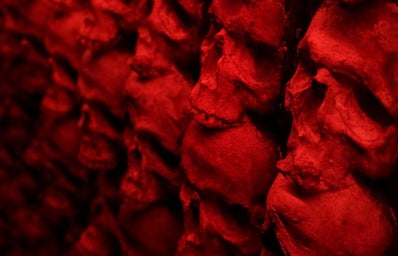What things come to mind when you think of Satanism? Perhaps it’s black metal, Dungeons & Dragons, or baby-sacrificing rituals– an aesthetic of horror, death, and sin. Perhaps you imagine a tall, blood-soaked devil, or simply the personification of evil. Perhaps you take the sole existence of Satanism as an attack to your personal beliefs and faith, or maybe you just think it’s weird. And let me say, I don’t blame you; what else could you have thought? After all, the pen of history is in the hands of the favored, not the excluded. But today, I’d like to address the reality of Satanism that has often been scratched out and dismissed as part of religious history and emphasize the values of liberation and control that act as Satanism’s foundation. Starting from the origin of Romantic Satanism, I’ll mainly discuss the beliefs of contemporary Satanism and the modern churches that facilitate such religion.
Despite the prominent existence of evil entities in ancient religion and culture, the origin of Satan can be traced back to Zoroastrianism, arguably the oldest monotheistic faith that exists today. This religion invented the idea of two equally opposed enemies; one of good (Ahura Mazda) and one of evil (Angra Mainyu). Some scholars believe that Zoroastrianism helped to shape the Abrahamic religions due to the influence of the Persian Empire which was founded in 550 BC. This reveals the true meaning and origin of the word Satan, stemming from a Hebrew word which meant “adversary” or, “one who resists.” Through a Western view, one can read the word satanists in a medieval context and conclude that satanists worship Satan. However, the word satanist served merely to identify those who opposed, whatever the context may be. This is essential in order to understand when the modern definition of satanist originated, and therefore, to better understand modern satanism’s history!
The influence that Satan carried sparked the interest of many Romantics in the 17th century, with the artistic and intellectual movement focusing on “the individual, the subjective, the irrational, the imaginative, the personal, the spontaneous, the emotional, the visionary, and the transcendental.” Initiated by John Milton’s 1667 poem “Paradise Lost,” poetry, paintings, and socialist writings reformed Satan as an anti-hero; an admirable rebel to those suffering under oppressive religious and social structures at the time. The superstition of Satan, however, remained influential throughout history, which was used in justification of the execution of countless lives, mostly women, thought to have engaged in witchcraft and sorcery.
The ideas and beliefs of the Romantics paved the way for the rise of Satanic churches in the 19th and 20th centuries. The most successful (and personally amazing) outcome of contemporary Satanism is The Satanic Temple, founded in 2012 by Lucien Greaves and Malcolm Jarry, and is the only Satanic organization recognized as a church by the United States Federal Government and IRS (Internal Revenue Service). I would introduce them, but they can do it themselves: “The mission of the satanic temple is to encourage benevolence and empathy, reject tyrannical authority, advocate practical common sense, oppose injustice, and undertake noble pursuits.” They even have their own version of the Ten Commandments– the Seven Fundamental Tenets! Nonetheless, it’s important to note that The Satanic Temple is a non-theistic religious organization, meaning they don’t believe, or care to believe in any god or gods. Their Satan is a literary satan, exemplified by Milton’s poetic interpretation and the beliefs of the romantic satanists including the famous poets William Blake, Percy Bysshe Shelley, and Anatole France. They are huge advocates for social justice and are particularly active in the fight for women’s reproductive rights in the United States, currently hosting a fundraiser in support for their newly launched Samuel Alito’s Mom’s Satanic Abortion Clinic, a free religious telehealth medication abortion care in New Mexico. The Satanic Temple has also fought in support for LGBTQ+ rights, the separation of state and church, abolition of corporal punishment in public schools, and much more.
As you can see, satanism as it exists today is just that– the adversary, and as such, lives on in its purest ever form in our daily lives. Rather than ritualistic sacrifice, satanists believe in resistance– an action that is of utmost significance in the state of our world today. Satanism is the artistic and literary demonstration of rebellion against authority and focuses on liberation, individuality, and power. The power to change and simply be is entirely driven by you– in a sense, you are your own God. And although you might disagree with everything I just said, I’d like everyone to take away one thing from this article: to understand the power, beauty, and capability that lies within each individual, including you, may be guided but is never dependent on anyone but yourself–you are capable of anything and everything!


